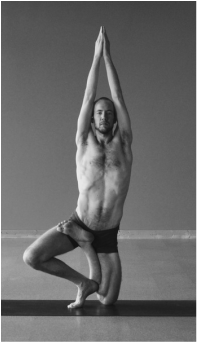|
Over the past week we have learned several different breathing exercises (Pranayama). Each serves a different purpose. One to balance the mind, one to energize it, one to calm it. One to cool the body, two to cleanse it. One to simply slow the breath. These are all seated breathing exercises to affect the nervous system and the body’s physiology. When combined with the various standing breathing exercises we have learned to warm and develop the muscles of breathing, we have upwards of 20 breathing techniques.
Some of the more challenging, powerful and advanced practices of Hatha Yoga are the mudras - body positions done with very specific breath control. Muktamala has taught us a small handful of these and it is wonderful to practice them at the end of our asana sessions. She taught us a version of Viparit Karani, the simple inversion that resembles Shoulderstand, that I hadn’t seen before. Agni Sar, the fanning of the digestive fire, also takes on a different form here than what I have learned in the past. Same for Yoga Mudra, the cross-legged forward fold with held breath. I embrace these variations whole-heartedly, happy to become familiar with a different side of the exercises. It is like seeing an old friend in a new light. The perspective brings added meaning and a deeper understanding. Today Muktamala leads us through a very specific meditation. It follows our physical practice. (what Muktamala refers to as “Practicals”). It is not long. It begins with a few lengthened breaths to quiet the mind and body, followed by a few minutes of simple mind-observation. Notice your thoughts, acknowledge them and let them go. Next comes a period of “so-hum” meditation, where the tone of the mind shifts slightly on the inhale and exhale. After a few minutes the focus is released and the meditation ends. Nearly every class ends with Bhramari, the ears and eyes closed and a rich Om vibrates the skull. Then we rest quietly to finish class.
0 Comments
Leave a Reply. |
This journal honors my ongoing experience with the practice, study and teaching of yoga.
My FavoritesPopular Posts1) Sridaiva Yoga: Good Intention But Imbalanced
2) Understanding Chair Posture 2) Why I Don't Use Sanskrit or Say Namaste 3) The Meaningless Drudgery of Physical Yoga 5) Beyond Bikram: Why This Is a Great Time For Ghosh Yoga Categories
All
Archives
November 2017
|


 RSS Feed
RSS Feed